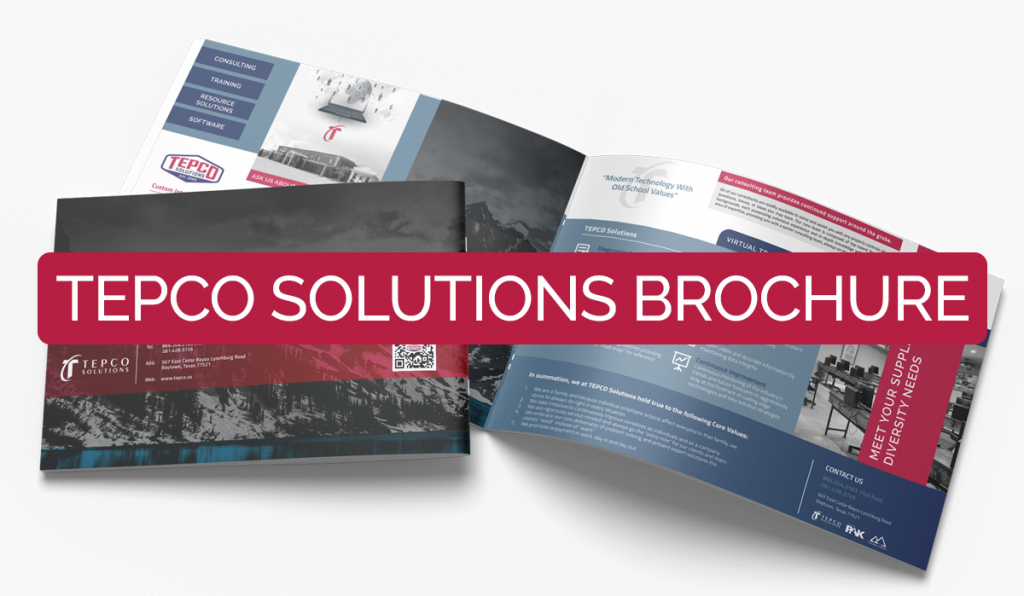Mar 11, 2021 | Training Course Outlines
Print Outline
Course Introduction
- Introduction to Cost Review
Section 01: Industry Changes in Cost Management
- Current TAR Process
- Suggested TAR Process
Section 02: Turnaround Cost Cycle – High Level
- Turnaround Phases
- Turnaround Cost Cycle
Section 03: Cost Breakdown Structure
- What is a Cost Breakdown Structure?
Section 04: Estimate Development
- Estimate Timeline
- Preparation Estimate
- High Level Scope Estimate
- Work Scope Estimate
- Plan Estimate
Section 05: Budget Development
- Estimate vs Budget
- Histograms
- Staffing Plans
- Bid Sheets
- Estimate Breakdown Sheets
- Purchase Orders & Control Budget
Section 06: Preparing for Execution
Section 07: Cost Tracking & Control
- Execution Activities
- Daily Force Reports
- Daily Timesheets
Section 08: Deliverables to Management
Section 09: Closeout
Mar 4, 2021 | Training Course Outlines
Print Outline
Introduction
- Introduction to Course
- Skills Required for Cost
Section 01: Cost Management
- What is Cost Management?
- Processes
- Why it is important?
Section 02: Cost Breakdown Structure
- What is a Cost Breakdown Structure?
Section 03: Estimate & Budget Development
- Estimate vs Budget
- Estimate Development
- Budget Development
Section 04: Cost Report
- What is a Cost Report?
- Critical Data included in Cost Report
Section 05: Cost Control
- Cost Control Steps Overview
- Cost Tracking Sheet
Section 06: Change Management
- What is Change Management?
Section 07: Capital vs Turnaround
Dec 15, 2020 | Training Course Outlines
Print Outline
Section 01: User and Admin Preferences
• Review and adjust specific user and admin preferences to provide an in-depth understanding of how they can affect scheduling
Section 02: Duration and Percent Complete Types
• Hands on review of how activity Duration Type affects schedule calculations
• Hands on review of how activity Percent Complete Type affects schedule calculations, specifically around earned value reporting
• Review common default project settings
Section 03: Utilizing P6 Cost Accounts
• Cost Accounts Relationship to Earned Value Reporting
• Example Utilizing All Earned Value Components
• Cost Account Structure in P6
• Create a Cost Account Structure
• Assigning Cost Accounts to activity Resource Assignments or Expense Assignments
Section 04: Importing and Exporting
• P6 XER file import and Export
• Excel Import and Export
• Exporting and Importing Layouts and Reports
Section 05: Utilizing Cost
• Understand how the Resource Type affects units, cost, and earned value field calculations
• Apply hourly rates to labor, non-labor, and material resources
• Add expense items with cost
• View the overall costs for a P6 project file
Section 06: Allocation Resources
• Setting Up the Resource Assignments View Layout
• Apply Budgets and Assign Cost Accounts in the Assignments View
• Changing Resources on Assignments
Section 07: Resource Leveling
• Leveling Concepts
• P6 Leveling Settings
• Activity Leveling Priorities
• Creating Shift Calendars
• Setting the Resource Limits (Max Units/Time)
• Adjust Resource Limits (Max Units/Time)
• View and Print a Resource Profile Summary
Section 08: Advanced Scheduling Concepts
• Adding Contingency to a Schedule
• Retained Logic and Progress Override
• Calendar Effect on Relationship Lag Assignments
• Calculating Multiple Float Paths
Section 09: User Defined Fields and Global Change
• Define and Create User Defined Fields
• Understanding the Global Change Functionality
• Create and Apply a Global Changes
Section 10: Change Control and Baseline Updates
• Use a P6 Staging Project for Pending Changes
• Performing “What-If” Schedule Analysis
• Apply Approved Changes to a Project
• Baseline Updates with Schedule Changes
Section 11: Reflection Projects
• Understand Reflection Projects
• The Common uses for Reflection Projects
• Create, Edit, and Merge a Reflection Project
Dec 15, 2020 | Training Course Outlines
Print Outline
Section 01:
• Introductions
• Preparation for Planning at a New Site
• Introduction to Event Phases
• Understanding Work Scope Development
• Prepare Walk Down Document Needs (P&ID, Isometrics, ITP, Blind List)
• Utilize Onsite Training Unit and Perform Job Walk Downs
• Complete Work Package Data Markups (P&ID’s, Plot Plans, Picture Templates)
• Introduction to Planning Programs
• Introduction to Planning Templates
• Coding of Activities
• Use of Estimating Toolbox for Durations and Man Hour Entries
• Accurate BOM Creation
• Attaching Data to the Job Plan
• Data Warehousing and Data Mining of Solid Work Plans
Section 02:
• Assignment of Jobs for Planning
• Perform Job Walk Down Per Scope or Work List
• Work Package Data Markups (P&ID’s, Plot Plans, Picture Templates)
• Create Complete Detailed Job Plan Using Materials and Tools
Provided
• Understanding and Performing Job Plan Validations
Section 03:
• Finalize Plan Validations
• Your Plan is Off to The Schedule and What That Means
• A Visit with The Schedulers
• Staffing, Budgeting, Material Requisitioning, Contractor Validations, and Execution
• A Visit with The Cost Department
After this course the student will be able to:
• Apply Learned Planning Processes in A Real-World Environment
• Understand Planning Processes from Scope Development to Schedule Importing
• Obtain 24 PDU’s (Professional Development Units) to PMI (Project Management Institute)
• Create Turnaround and Maintenance Plans with Confidence
Dec 15, 2020 | Training Course Outlines
Print Outline
Section 01: Capital Integration Overview
• Overview of the client integration of schedules
Section 02: Front-End Loading (FEL)
• FEL Process
• Stage Gate
Section 03: Creating the Enterprise Project Structure
• Understanding the EPS
• Basic EPS build
Section 04: User Preferences
• How users preferences affect the project
• Setting user preferences
Section 05: Creating a Project
• Utilizing the Project Wizard
• Critical steps to know when beginning a project
Section 06: Calendars
• Understanding the calendar functionality
• Understanding Time Periods
• Creating new calendars
Section 07: Work Breakdown Structure (WBS)
• Identifying Standard Capital Project WBS
• Creating a WBS
• Utilizing the WBS
Section 08: Template Development
• Activity & Relationship Types
• Duration & Percent Complete Types
• Adding Activities
• Creating Activity Relationships
• Understanding Lag
Section 09: Activity Codes
• Building Code with Structure
• Creating Activity Codes at Different Levels
• Methods for Assigning Codes
Section 10: Budget Development
• Creating Roles
• Managing Roles
• Reporting on Role Loaded Activities
Section 11: Customizing the Project
• Understanding Group and Sort
• Understanding and Utilizing Filters
• Importing & Exporting Layouts
• Bars, Fonts, and Row Heights
Section 12: Full Template Usage
• Understanding the Template Process
• Utilizing the Template
Section 13: Maintaining & Assigning Baselines
• Understand Baselines
• Creating Baselines
• Utilizing Baselines
Section 14: Scheduling the Project
• Understanding Forward and Backward Pass Calculations
• Understanding Float & Critical Path
• Schedule Log Files
Section 15: Reporting
• Report Window
• Running Reports
• Batch Reports
Dec 15, 2020 | Training Course Outlines
Print Outline
Section 01: Phase I – Conceptual
- Conceptual Development
- Steering Team
- Lessons learned
- TAR Premise
- Document and Forms
- Roles and Responsibilities
- TAR Preparation Estimates
- Scope development
- Long Lead
- Planning
- Scheduling
- Budget development
- Facilities and Supplies
Section 02: Phase II – Identification
- Core Team / Training
- Plan the Plan Schedule
- RACI
- High-level Scope estimate +- 50%
- Scope Development
- Scope Challenge / Validation
- Scope freeze
- Long Lead Items Procurement
- Contracting Strategy
- Premise Documents
- Planning and Scheduling Staff and Preparation
- Tar Processes
- Scope Development
- RMI / Tier ranking
- Planning Process
- Plan Validations
- CWR / AWR Process
- Material Management
- Primary and Secondary Contractor Identification
- Primary and Secondary Vendor Identification
Section 03: Phase III – Definition
• Finalized Worklist
• Work Scope Estimate +- 30%
• Team Identification and Training
• Detailed Planning and Scheduling
• Task Planning
• Material Requirements
• Equipment Requirements
• Lead Planner Validations
• Internal Team Validations
• Schedule Development
• Project Integration / IFC Decomposition
• Temporary Facility Requirements
• Logistic Needs
• Bids / Staffing Plans
• Kick-Off / Book
• Final Preparations
• Plan Estimate +- 10%
Section 04: Phase IV – Execution
• Final Execution Organization
• Decommissioning
• Report Schedules
• Kickoff Meeting
• Onboarding Craft Personnel
• Test Project Control Systems
• Control Budget
• TAR Execution
• PSSR
• Commissioning
Section 05: Phase V – Closeout
• Post TAR
• Demobilization
• Excess Material Management
• Lessons learned
• Post Tar Critiques
• Close Out Reports
After this course, the student will be able to:
• Apply Learned Project Controls Processes in A Real-World Environment
• Understand Complex Event Processes from Conception to Close Out
• Obtain 24 PDU’s (Professional Development Units) to PMI (Project Management Institute)
• Lead Turnaround and Maintenance Planning Teams with Confidence


